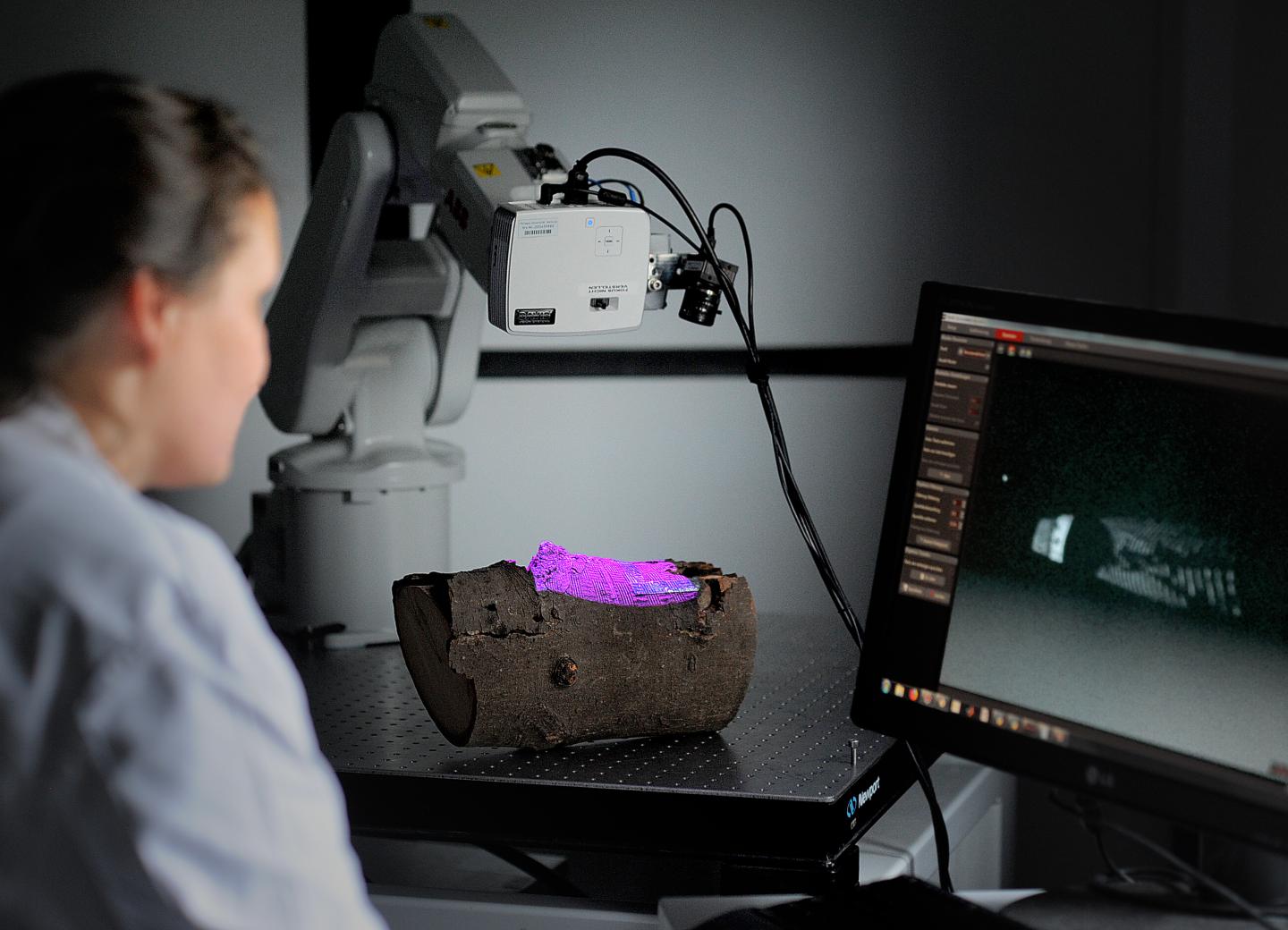New technique could catch insect infestation in individual trees at early stages

Credit: HAWK University of Applied Science and Arts
WASHINGTON — Insect infestation is becoming an increasingly costly problem to the forestry industry, especially in areas experiencing increased droughts and hot spells related to climate change. A new terahertz imaging technique could help slow the spread of these infestations by detecting insect damage inside wood before it becomes visible on the outside.
“Our approach could be used to detect early-stage insect infestation on the trunks of trees, in imported wood or on wood products in an early infestation stage,” said research team member Kirsti Krügener, from HAWK University of Applied Science and Arts in Germany. “This could help keep out damaging insects from other countries and stop infestation before it spreads throughout a forest.”
In the Optical Society journal Applied Optics, the researchers report how they used terahertz time-of-flight tomography to noninvasively identify wood samples with otherwise invisible damage from the typographer beetle, which infects spruce and other coniferous trees in Europe. They were also able to reconstruct the internal structure of wood samples.
“Detecting the boreholes of wood-destroying insects is typically done by manually inspecting the wood, and the infected area of the forest to be removed is then estimated,” said Krügener. “To our knowledge, this is the first time a technical method has been used to detect insect boreholes.”
Incorporating the new approach into a portable instrument could allow assessment of individual trees in a forest so that only infested trees would need to be removed. Because it does not damage the sample being imaged, the technique might also be useful for investigating mummies, studying and restoring art or for quality control in industry.
Seeing beneath the surface
The terahertz region of the electromagnetic spectrum lies between microwave and infrared regions. It is used for applications such as the full-body scanners found in many airports because it doesn’t harm people or materials being examined and can see through materials such as clothing, plastics and plant material.
Terahertz time-of-flight tomography works much like ultrasonic measurement in that each interface within the wood sample reflects a certain amount of the terahertz radiation that is detected and analyzed in respect to its time-dependent order. Each subsurface tunnel made by the insects leads to a new interface on which the radiation is reflected.
“An infested sample will reflect more terahertz radiation than one that is not infected because there will be fewer interfaces,” said Krügener. “In addition, the individual reflected terahertz signals can be used to form a picture of an entire area so that the inner structure of infested wood can be visualized.”
Beyond flat surfaces
Although terahertz time-of-flight tomography has been used for almost 20 years, until recently it could only be applied to flat samples. Two years ago, the researchers developed new procedures to use a robotic arm to scan an arbitrarily shaped sample point by point while keeping the emitter-receiver-head perpendicular to, and at defined distance from, the sample surface.
The researchers applied those methods to image wood samples with both known and unknown inner structures. They compared the results to conventional tomographic techniques and found that the inner structure reconstructed from terahertz signals matched well with what can be achieved with X-ray or computed tomography. They were able to distinguish between infested and non-infested samples by detecting typographer beetle burrows that were up to 1 centimeter beneath the wood’s surface.
“The depth resolution of the terahertz measurements is higher than that of conventional x-ray techniques and comparable to micro-CT,” said Krügener. “However, unlike micro-CT, the terahertz system can be used with any size sample.”
The researchers are now working to improve the speed of the measurement and data analysis and also develop more complex data analysis to make the method more practical for detecting infested wood. They also want to develop a portable instrument that could be used in the field.
###
Paper: K. Krügener, E.-M. Stübling, R. Jachim, B. Kietz, M. Koch, W. Viöl, “THz tomography for detecting damages on wood caused by insects,” Applied Optics, 58, 22, 6063-6066 (2019). DOI: https:/
About Applied Optics
Applied Optics publishes in-depth peer-reviewed content about applications-centered research in optics. These articles cover research in optical technology, photonics, lasers, information processing, sensing and environmental optics.
About The Optical Society
Founded in 1916, The Optical Society (OSA) is the leading professional organization for scientists, engineers, students and business leaders who fuel discoveries, shape real-life applications and accelerate achievements in the science of light. Through world-renowned publications, meetings and membership initiatives, OSA provides quality research, inspired interactions and dedicated resources for its extensive global network of optics and photonics experts. For more information, visit osa.org.
Media Contact: [email protected]
Media Contact
Charles Blue
[email protected]
Original Source
https:/
Related Journal Article
http://dx.




